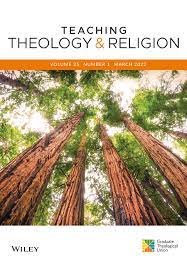Articles in Peer Reviewed Journals and Book Chapters
“David has Killed his Ten Thousands, Saul his Hundred Thousands;” Troop and Casualty Numbers in Josephus and 1 – 2 Samuel,” Scandinavian Journal of the Old Testament (forthcoming, December 2024).
Abstract: In Josephus’ re-telling of 1-2 Samuel in Judean Antiquities, his quantifications of Saul and David’s battles, troops, and casualties have particular rhetorical effects. When the numbers in MT and LXX differ, Josephus often uses the numbers that most aggrandize Saul and David’s leadership. He also sometimes embellishes or supplies numbers when the biblical text lacks them. Josephus’ quantification of Saul’s battles specifically results in a somewhat different portrait of Saul than the biblical text paints—in 1 Sam 18:7, “Saul has killed his thousands, David his ten thousands,” but in Josephus, Saul kills more than a hundred thousand men. This article considers the numbers used to quantify Saul and David’s battles in the MT, the different numbers found in the LXX, and then discusses how Josephus chooses to quantify these two men in ways that sometimes depart from the biblical text.
“The Reversal of (Food) Injustice: The Song of Hannah (1 Sam 2:1–10).” Bulletin of Biblical Research 33(4) (2023): 458-475.
Abstract: The book of Samuel contains numerous mentions of food, particularly in connection to David. This article examines how the Song of Hannah provides a lens for interpreting food-related events in the book of Samuel. First, it considers how the Song of Hannah describes God’s engagement with the hungry and the well-fed, along with how the surrounding narrative reinforces that picture. Second, it identifies four ways that David appears in relationship to food throughout the book. In each of these, David seems to align himself with the vision of food justice laid out in the Song of Hannah—David regularly feeds the hungry; David sometimes refuses to eat for virtuous reason; David ensures that everyone under his care receives an equal portion; and sometimes, David himself is the hungry person who is fed. Finally, it demonstrates that David’s major moral failure is characterized, parabolically, as an act of the unrighteous rich who take the food of the poor in an act of “hypocritical hospitality.”
“Freeing Ahasuerus, Haman and Mordechai; Liberating the Oppressor in the Book of Esther,” Journal of Theological Studies 71 (2020):36-61.
Abstract: In this essay, I argue that “contingent” is not a plausible translation for אלף in Joshua - 2 Kings. My argument focuses on two types of evidence that have received scant attention in the conversation thus far — grammatical and comparative. First, there are several unique ways that the term אלף behaves grammatically like a numeral when it is used in conjunction with other numerals. Second, comparative linguistic data demonstrates the absence of any clear evidence not only that אלף was ever understood as an armed militia group in biblical Hebrew 8, but also that this was ever a definition for the cognate term in other Semitic Ianguages (such as Ugaritic alp). Third, a survey of comparative literature demonstrates that other ancient Near Eastern texts that contain battle narratives do not enumerate numbers of contingents when reporting troop and casualty figures. On the other hand, they do report hyperbolic numbers in the tens and hundreds of thousands. In the Assyrian Royal Inscriptions, for example, kings do not declare how many dozens or hundreds of contingents they killed or exiled, but how many thousands of men. It seems unlikely that the authors of the DH would regularly report battle numbers in terms of “contingents”, when other ANE texts do not speak in this way.
“What Did YHWH Do in Lam 1:12?: Correcting a Misreading in the DJD Edition of 4QLam.” Vetus Testamentum (2016): 513-523.
Abstract: In his edition of 4QLam in DJD XVI, F. M. Cross found a significant and otherwise unattested variant for a much-discussed crux, reading יהוה הוגירני” ,YHWH frightened me (√יגר “,(instead of יהוה הוגה” YHWH has afflicted (√יגה .“(However, close inspection of the manuscript indicates that the verb should actually be read הוגיאני ; Cross incorrectly identified an ʾalef as a resh. Furthermore, I argue that the reading in 4QLam attests to the more primitive reading יהוה הוגיעני ,from which the others developed, though this reading is not actually found in any extant manuscript. This means that instead of a text that originally read, “YHWH afflicted (me),” as many previous translations have concluded, or “YHWH frightened me,” as Cross suggested, one finds a text that said, “YHWH wearied me.”



